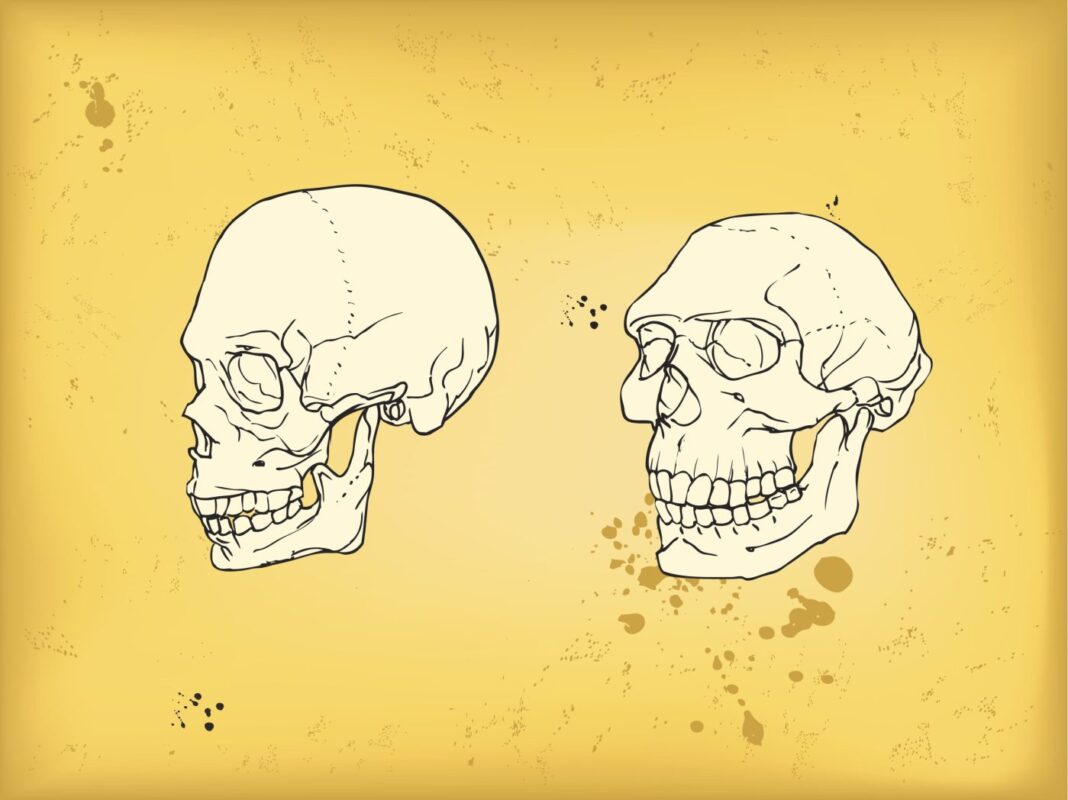A single difference in a protein called TKTL1 may have given modern humans a significant advantage over Neanderthals. Scientists have shown that the human TKTL1 variant, but not the archaic variant, increases the production of brain cells in the neocortex, which is distinctly complex in humans. This may underlie the presumed cognitive differences between modern and extinct archaic humans.
The study was led by Wieland Huttner, PhD, group leader and director emeritus at the Max Planck Institute of Molecular Cell Biology and Genetics in Germany. His team’s article, “Human TKTL1 implies greater neurogenesis in frontal neocortex of modern humans than Neandertals,” was published in Science.
The neocortex, which is the outer region of the cerebral cortex, is an evolutionarily advanced brain structure that is widely thought to endow our species with unique and extraordinary cognitive abilities. However, fossil evidence indicates that the Neanderthal brains were similar in size to those of modern humans, and how they might have differed in function or structure has remained unknown.
Huttner’s team compared genomic sequences from modern humans with those of Neanderthals and other apes and discovered a unique amino acid substitution encoded in the TKTL1 gene of modern humans. The amino acid is a lysine in apes and archaic humans but an arginine in modern humans.
“We therefore investigated (i) whether TKTL1 has a role in neocortex development and affects neuroprogenitor numbers and (ii) whether both archaic TKTL1 (aTKTL1) and modern human TKTL1 (hTKTL1) exert similar effects on neuroprogenitors during neocortex development,” they wrote.
When placed in organoids or overexpressed in mouse and ferret brains, the team found that, compared with aTKTL1, hTKTL1 generated more basal radial glia (bRG) neuroprogenitors, which resulted in the proliferation of neocortical neurons. Disrupting hTKTL1 expression or replacing hTKTL1 with the archaic variant in human fetal neocortical tissue and cerebral organoids resulted in reduced bRG and neuron generation.
“Our results identify the functional role of a single modern human-specific amino acid substitution in the control of the abundance of one type of neuroprogenitor during neocortex development,” the authors wrote. “Our data therefore imply a difference in cortical neuroprogenitor composition between Neanderthals and modern humans.”
In humans, the TKTL1 gene encodes an enzyme that is part of the metabolic pathway involved in generating acetyl-CoA, which is used in fatty acid synthesis.
“Together, the results support the hypothesis that hTKTL1 promotes the proliferation of bRGs, a cell population characterized by long basal processes that especially require high amounts of fatty acids,” explained Brigitte Malgrange, PhD, and Laurent Nguyen, PhD, from the University of Liège in Belgium, in a related perspective. “This mechanism could represent one crucial driver of brain evolution between ancestral and modern humans.”







